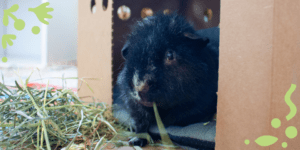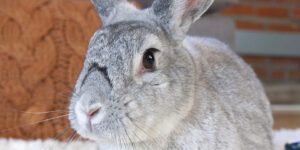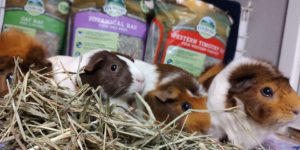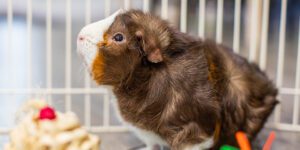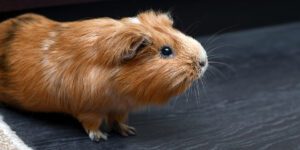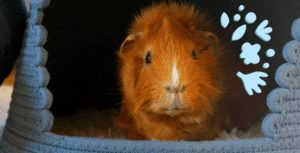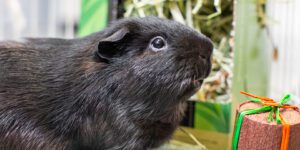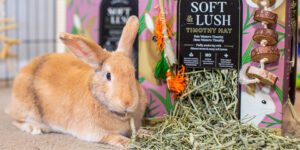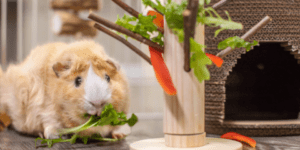Author: Kellie Hayden; Updated September 5, 2025
Welcome to the adorable world of guinea pigs! You might be surprised to learn about the wide variety of guinea pig breeds out there. In this blog, we cover the most common guinea pig breeds, unique traits and how to care for each breed.
How Many Different Breeds of Guinea Pigs Are There?
The amount of guinea pig breeds out there is up for debate. For example, some consider Abyssinian guinea pigs and Ridgeback guinea pigs one breed, while others see them as different. There are also some breeds that the general public recognizes that official breeding associations do not recognize.
In our blog, we describe the following guinea pig breeds:
- American Guinea Pig
- Crested Guinea Pig
- Teddy Guinea Pig
- Rex Guinea Pig
- Abyssinian Guinea Pig
- Cuy
- Peruvian Guinea Pig
- Coronet Guinea Pig
- Silkie Guinea Pig
- Merino Guinea Pig
- Texel Guinea Pig
- Lunkarya Guinea Pig
- Skinny Guinea Pig
- Baldwin Guinea Pig
Short Haired Guinea Pig Breeds
American Guinea Pig
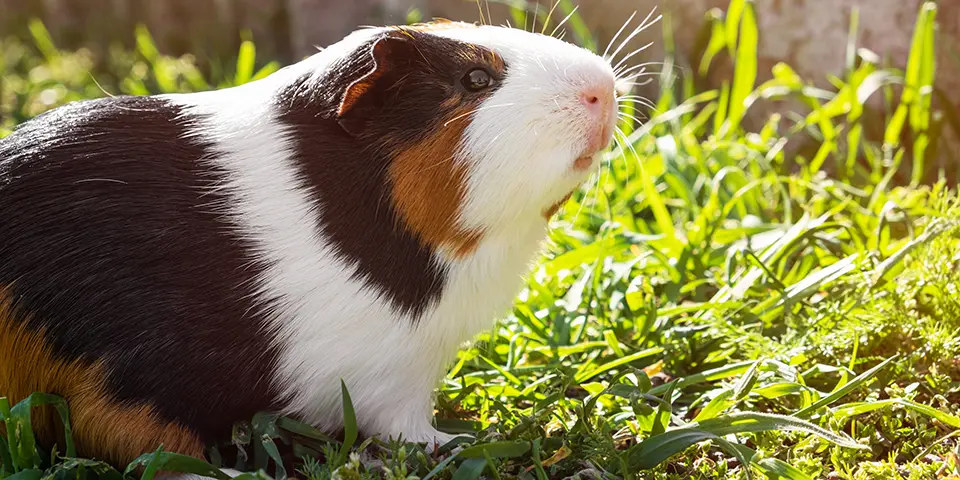
American guinea pigs are the classic example of what people think when they picture “guinea pig.” American Pigs have short hair that comes in a dizzying variety of colors and color combinations.
This is one of the most common pig breeds in North America. Many consider American Guinea Pigs to be friendly and sociable. This breed’s coat is easier to maintain than many of the other breeds we discuss in this blog.
Crested Guinea Pig
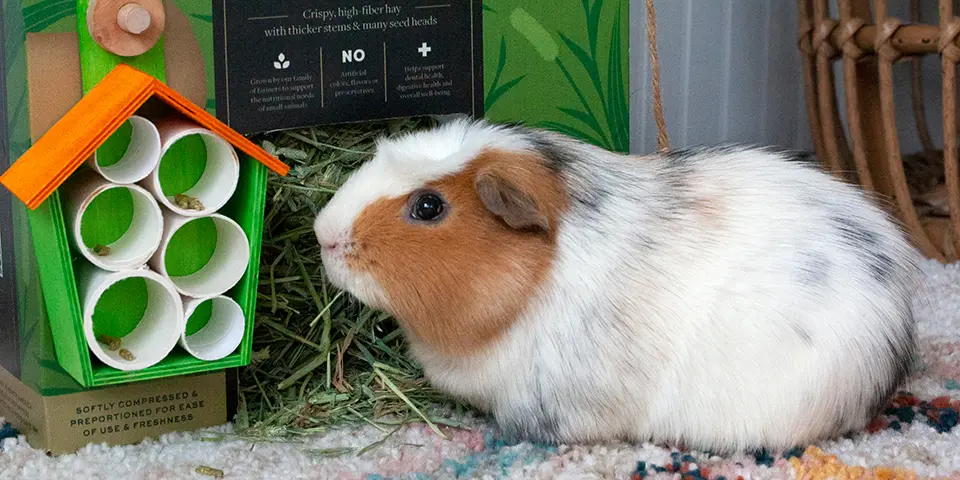
Crested Guinea Pigs are like American Guinea Pigs with a twist. While they have short and smooth coats, Crested piggies have a “cow lick” on the top of their head! There are two types of guinea pigs with crests and short hair.
The first is the American Crested Guinea Pig, or the White Crested Guinea pig. The second is the English Crested Guinea Pig, or the Self Crested Guinea Pig. An American Crested Guinea Pig usually has a white crest, while an English Crested piggy has a neutral crest.
While this breed is less common than the American, Crested Guinea Pigs are becoming a more well-known breed in North America. Many Crested Guinea Pigs appear to have “eyebrows” and can look quite curmudgeonly. In reality, this breed can be just as social and friendly as the American Guinea Pig. Also similar to the American, this breed’s short coat requires minimal maintenance.
Teddy Guinea Pig
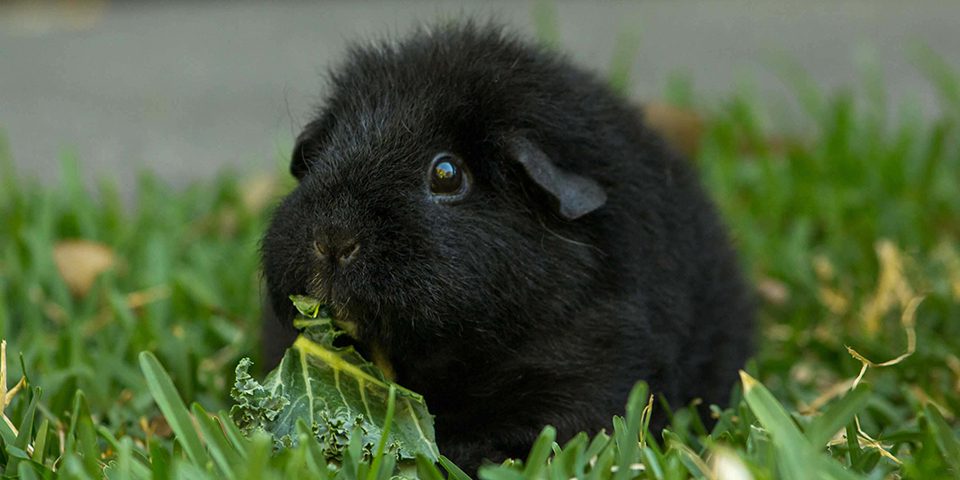
Teddy Guinea Pigs have dense, soft, and short fur that sits upright. This can give Teddies an adorable “plush toy” appearance. Some pet parents may find that Teddy Guinea Pigs are slightly smaller than other piggies, but they are by no means short on personality.
Teddies can be especially lively and happy little pigs! Their fur is dense and short and may benefit from occasional gentle brushing to assist shedding.
Rex Guinea Pig
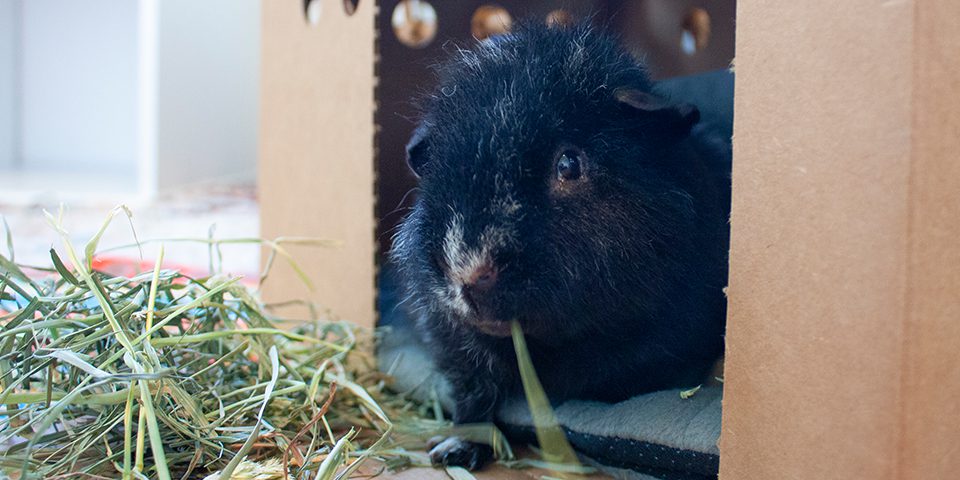
Rex Guinea Pigs are similar in appearance to Teddy Guinea Pigs. But whereas Teddys’ fur is dense, short, and soft, Rexs’ fur is dense, short, and more wiry or coarse to the touch. Like the Teddy, Rex fur also sits upright.
Rex Guinea Pigs are often playful, gentle, and intelligent. Some pet parents find that Rex piggies are especially good at creating their own fun by playing with safe-to-chew enrichment products. This breed could also benefit from an occasional soft brushing.
Abyssinian Guinea Pig
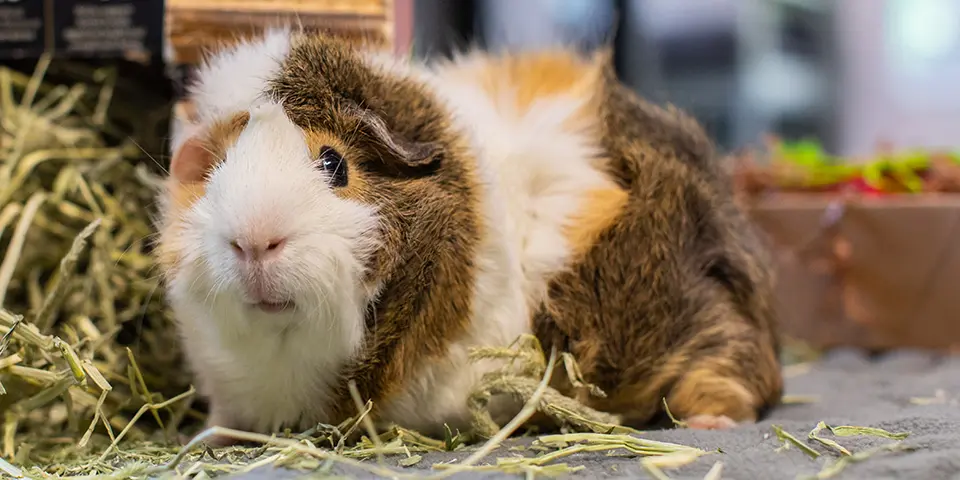
Abyssinian guinea pigs can be quite a sight! Abyssinian coats consist of at least a few rosettes that create the “cow lick” look all over their body. Abyssinian rosettes are as unique as the piggy themself.
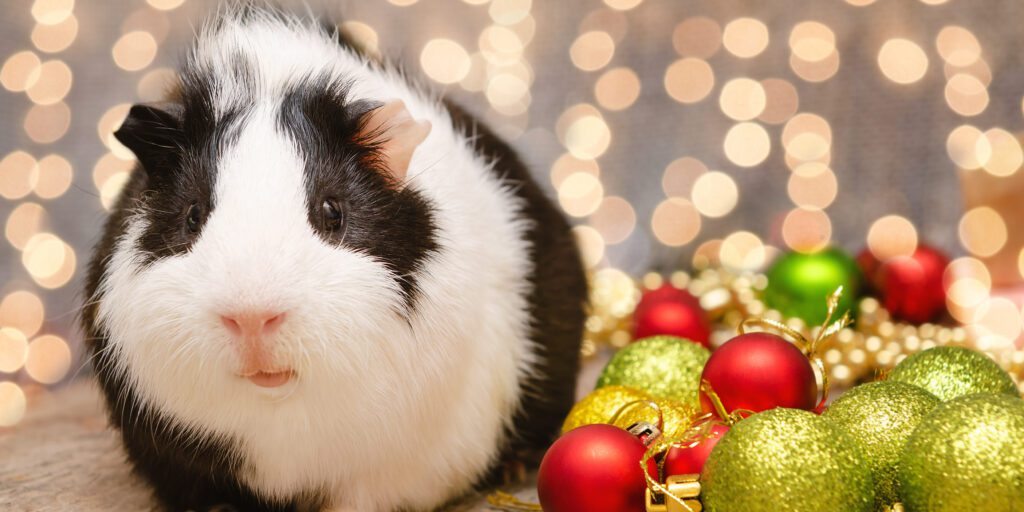
One Abyssinian type, the Ridgeback has fur that contains only a few rosettes. Their hair is spiky on the top of their body along their back, giving them a “mohawk” style called a comb.
Abyssinians have big personalities and are quite energetic and curious, aka “abbytude.” Some pet parents find that Abyssinians average slightly larger in body size than many other guinea pig breeds.
Cuy

Cuys are the giants of the guinea pig world! “Cuy” is typically what guinea pigs are called in some regions of South America. In some South American countries, guinea pigs are livestock and bred to be larger for meat production.
In the US, “Cuy” usually refers to an especially large guinea pig. Cuy overall are gentle giants who enjoy snuggling. People who have taken care of this breed have remarked how mellow they can be compared to other guinea pigs.
Typically, this breed is just happy to go with the flow. Cuy have short coats like Americans.
Long Haired Guinea Pig Breeds
Peruvian Guinea Pig
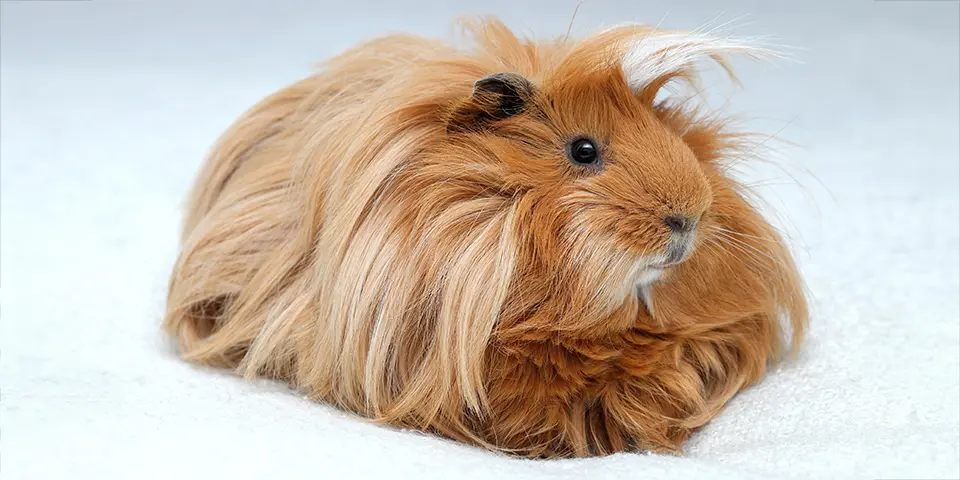
Peruvian guinea pigs certainly make a statement! They have silky, long, flowing locks of fur. Peruvians tend to have an upswept tuft of fur on their forehead, creating a cute hairdo. Peruvian guinea pigs also tend to rock a middle-part down their backs.
Peruvian guinea pigs are generally considered to be gentle and docile. Pet parents interested in a Peruvian however need to know that this breed can grow very long fur. They need daily care and maintenance like brushing and regular hair trims to keep their impressive coat in good condition.
Coronet Guinea Pig
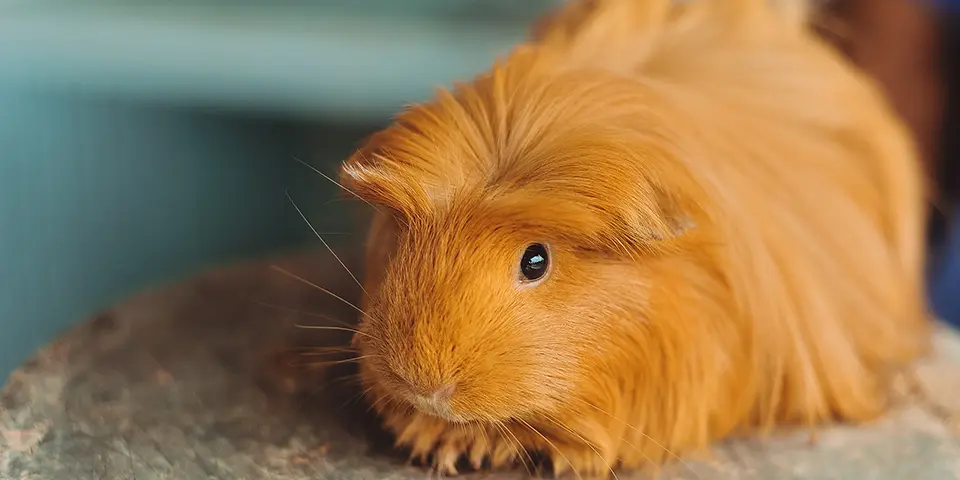
Coronet guinea pigs have long, typically straight fur with a forehead crest comparable to that of the Crested guinea pig. They can come in a variety of color combinations, though red, cream, and tri-color combinations are common.
Coronet guinea pigs are known to be calm and easygoing, which can come in handy when you’re taking care of their fur. Between their crest and their luscious locks they have quite a regal-looking appearance. Just remember, with that regal look comes a lot of daily grooming maintenance!
Silkie Guinea Pig
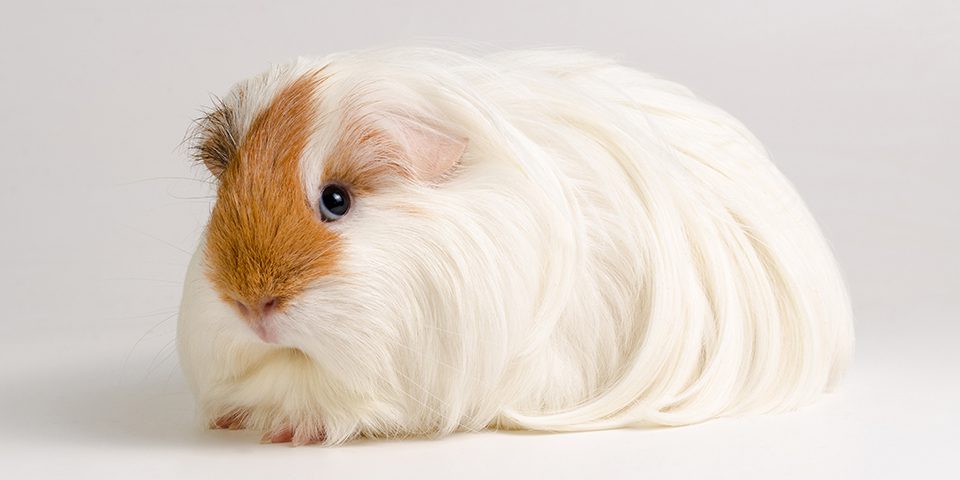
The Silke guinea pig, or Sheltie guinea pig, has long, sleek locks of fur that flow straight back from their head. Generally, they do not have rosettes or any wild hairdos in comparison to Peruvians or Coronets.
Silkies are a sweet and affectionate breed. Their fur is smooth, fashionable and requires daily maintenance to limit staining, matting, or debris collection.
Merino Guinea Pig
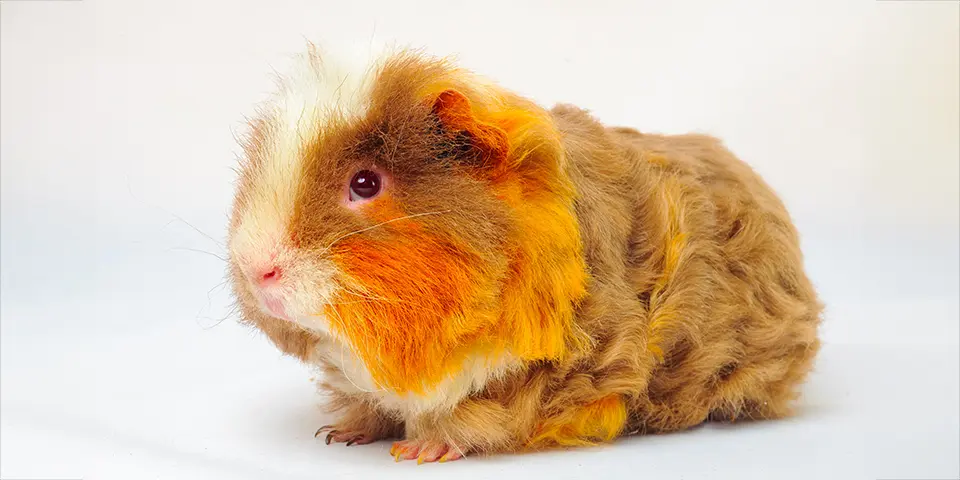
The Merino guinea pig (or alpaca guinea pig) generally has longer hair. This breed’s hair forms waves that sit tightly against the body. Their unique curls are highly reminiscent of their name sakes, merino wool or alpacas.
Merinos may have a rosette on their head that looks similar to the Crested guinea pigs’ trademark look. They come in a wide away of coat colors.
Behaviorally, merino guinea pigs are shy and gentle animals. Their fur might appear to be lower maintenance than some of their longer-furred cousins. But you will still need to brush bits of hay out of these curly locks on a regular basis.
Texel Guinea Pig
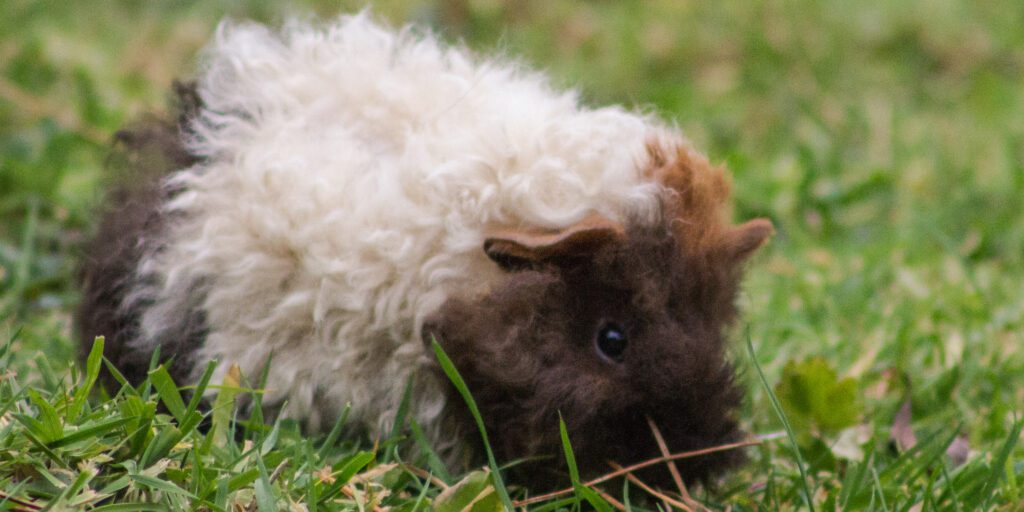
Texel guinea pigs also have curly hair, but it is longer in length than a Merino’s. Think of the curls of a Merino, paired with the hair length and centrally placed hair part of a Peruvian!
This breed of guinea pig is known to be playful and intelligent. While their curly coat is quite a sight, it can quickly become unsightly without adequate, daily care. Extra care should be taken with this breed due to their dense coats’ propensity to pick up and trap debris.
Lunkarya Guinea Pig
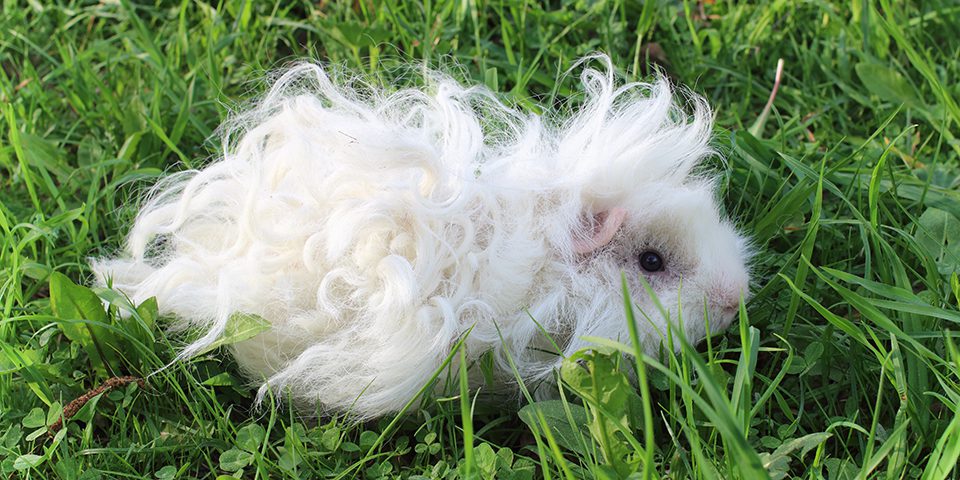
Talk about a wild hair day! Lunkarya guinea pigs’ manes cannot be tamed. In addition to long, dense locks of curly hair, the fur of a Lunkarya seems to go every which way. Their coats tend to have a rough texture.
Lunkarya guinea pigs are considered active and social. You’ll certainly be having a lot of social time with your guinea pig if you get a Lunkarya, too—their charming manes will require more intensive care than the majority of the other breeds listed here to ensure mats don’t form due to tangles or debris.
Hairless Guinea Pig Breeds
Skinny Guinea Pig
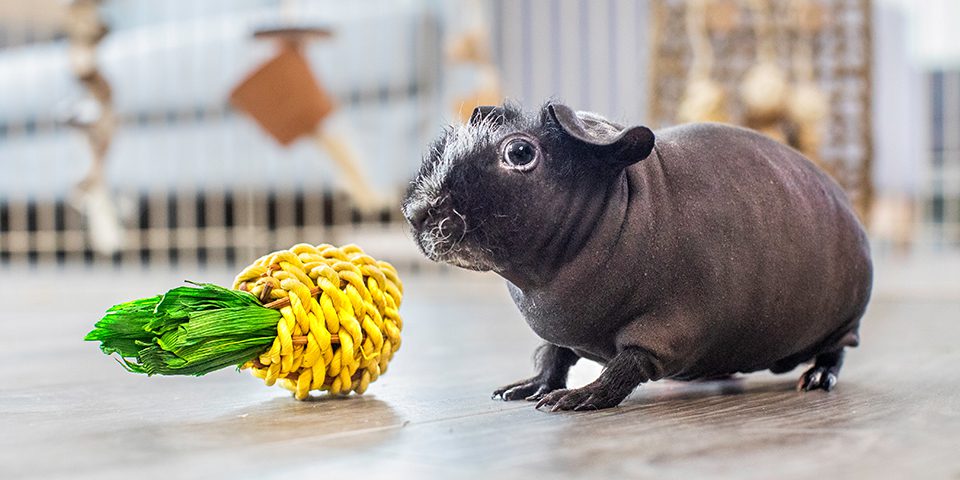
Sometimes affectionately called a “mini hippo,” skinny guinea pigs have recently gained popularity due to social media. Skinny pigs are almost entirely hairless, but will have some short, wiry hairs on their face and feet. Some skinny pigs that have more fur than a typical Skinny are sometimes referred to as “werewolves.” Because skinny pigs are mostly hairless, their colors are typically limited to black, brown, and pink.
Pet parents who have cared for skinny pigs remark that they are a friendly and affectionate breed, but they typically require more maintenance than a short-haired breed. Because skinny pigs do not have fur protect their skin, they can be more prone to issues with temperature regulation and dry skin. Careful consideration should be made regarding a skinny pig’s habitat and surroundings. They are especially susceptible to drafts, cold temperatures, and low humidity.
Before you grab a tiny sweater and hand lotion to put on your guinea pig, however, work with your veterinarian to find pet-safe moisturizer options, in addition to establishing a regular skin care routine. While clothing is certainly cute, it should be safe and easy to put on your guinea pig so you don’t risk straining their legs or injuring them in some other way.
Your exotics veterinarian might have some ideas for purchasing or making safe sweater options. Skinnies should be monitored closely while wearing clothing, as some pigs enjoy chewing on fabric and may ingest their clothing if left to their own devices. Some guinea pigs just don’t like wearing clothes—if your pet is showing signs of discomfort or distress, remove the sweater and discontinue clothing use.
Placing a pet-safe heating pad in one corner of your skinny pig’s habitat may be an option to help keep them warm, but there should be ample space in the habitat for your pet to step on and off the heating pad as they see fit to avoid overheating.
Baldwin Guinea Pig
Baldwin guinea pigs, in comparison to skinny guinea pigs, are almost completely hairless! They contain few to no hairs on their nose, aside from their whiskers. Baldwins are interesting in that this breed is born with fur, but over time they lose their fur to become hairless.
Baldwin guinea pigs are said to be lively and inquisitive little guys. Similar to skinny guinea pigs, great care needs to be taken to manage temperature fluctuations and skin conditions, especially as these piggies lose their fur while they age.
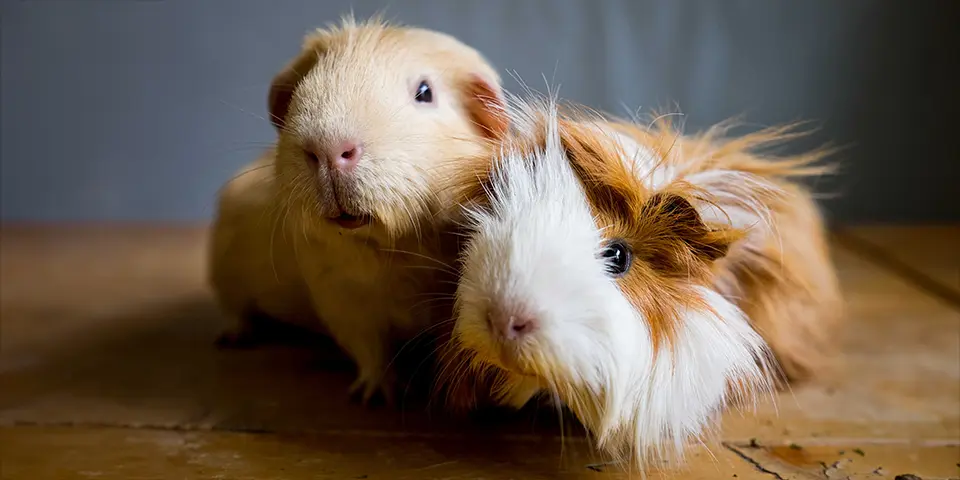
Which Guinea Pig Kind is Right for Me?
The guinea pig breed that’s right for you can be a complex question. To start, consider how much time you want to spend on skin and coat maintenance. If you can commit to daily pet grooming, long haired guinea pigs (or hairless guinea pigs!) might be an option for you.
If, however, you need your new friend to have fewer grooming requirements, a short-haired breed will be a better option. Regardless, all breeds of guinea pigs need dedicated love and attention from their pet parent.
Guinea Pig Food and Supplies
As of this blog’s writing, many shelters and specialized guinea pig rescues are filled and have surrender waitlists that contain hundreds of guinea pigs waiting to be rehomed. Please consider learning about what rescues are in your area and consider adopting a guinea pig. Rescues are a valuable resource to communities and provide much-needed services in housing, boarding, grooming, health checks, and education.

